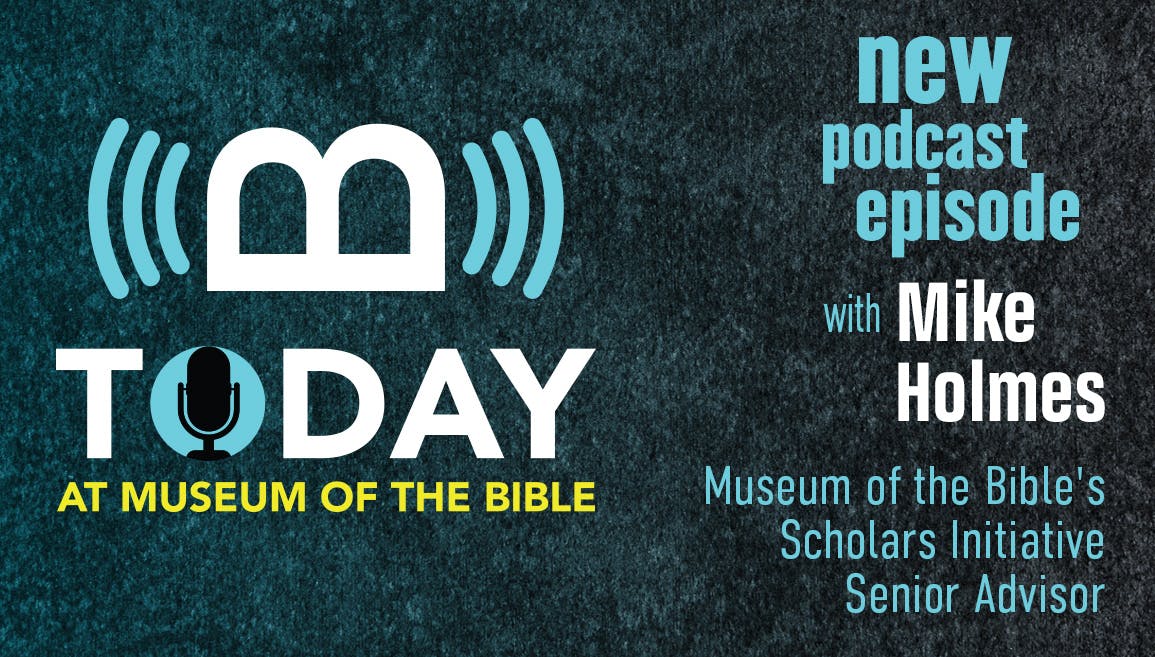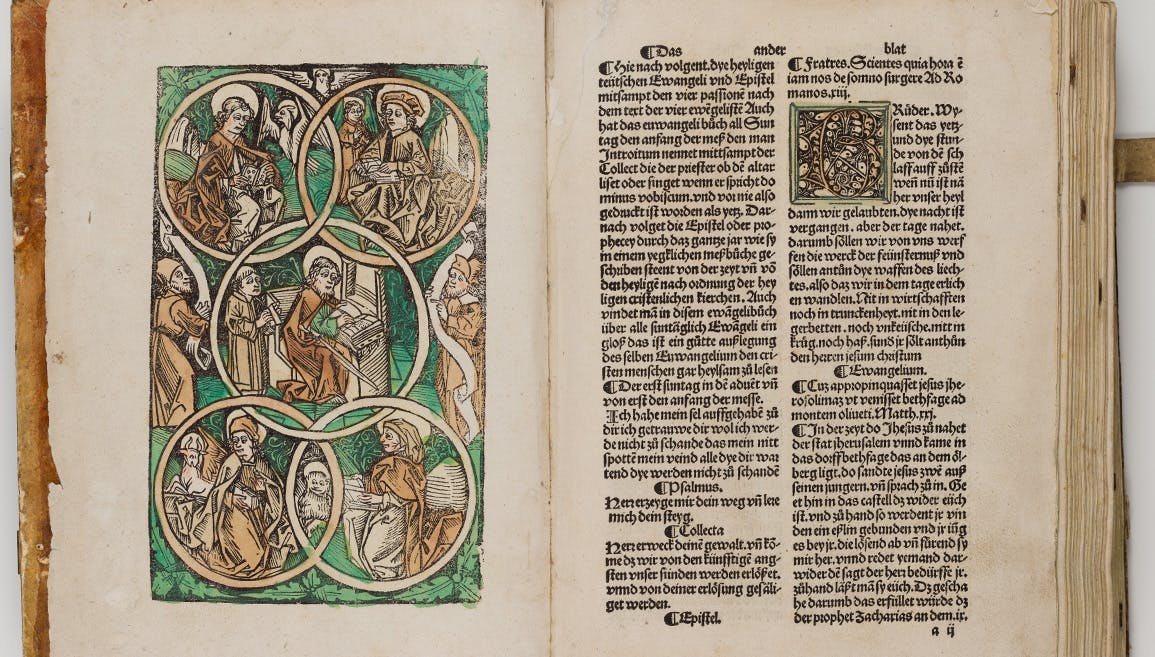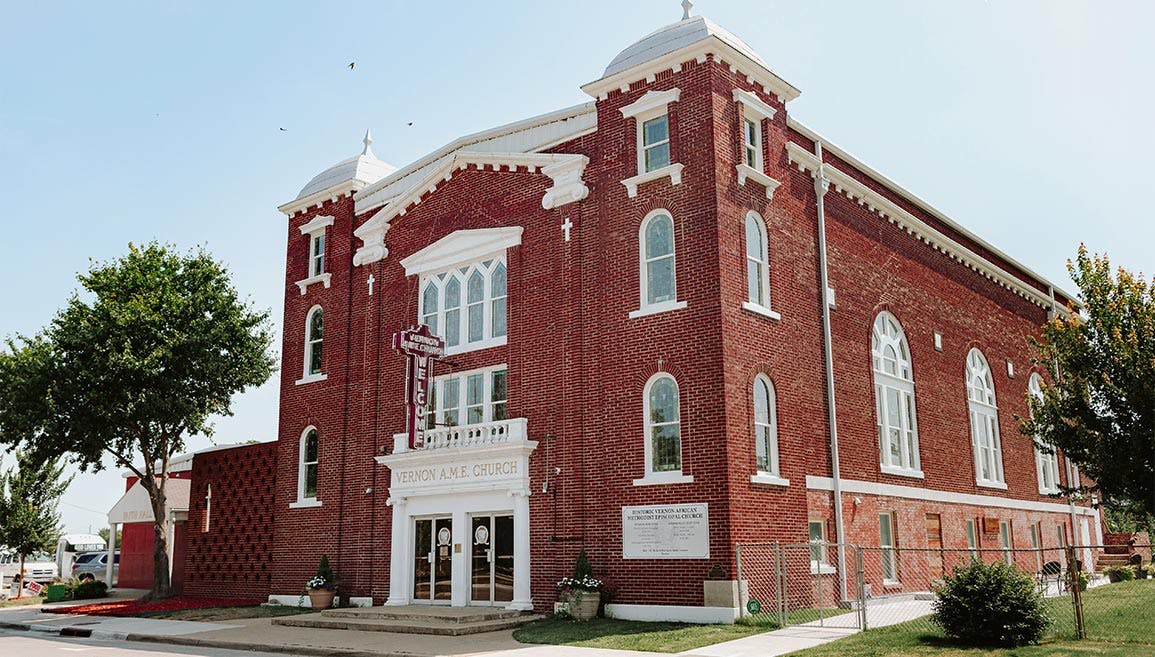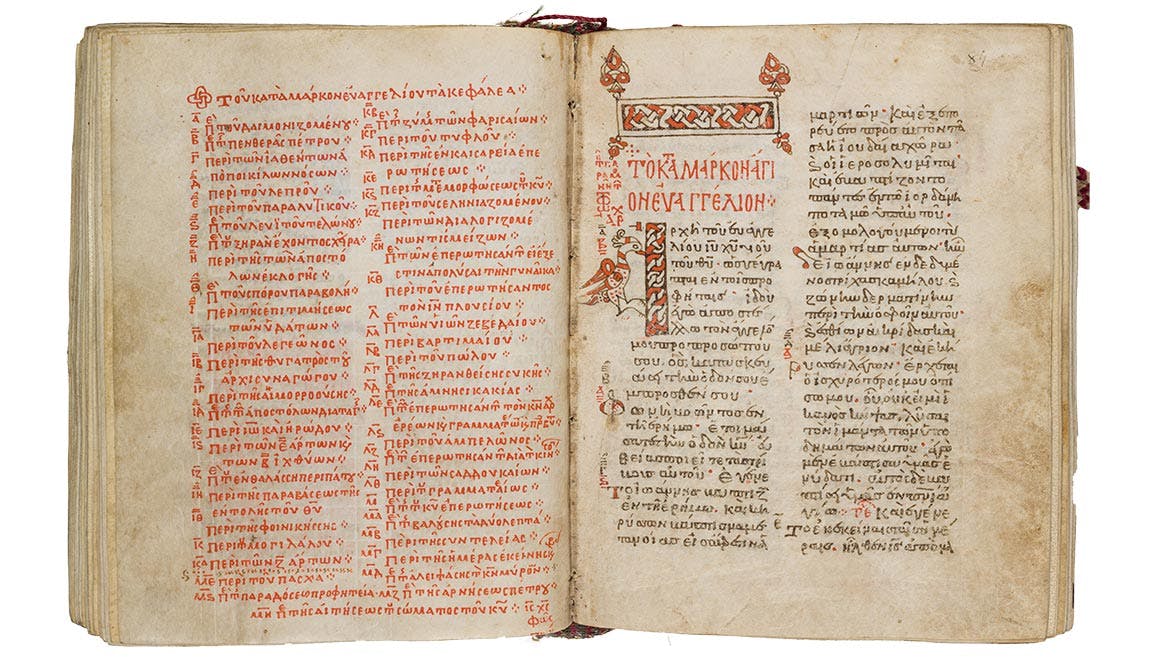From the Podcast: A Second-Century Papyrus Fragment with Sayings of Jesus

Recently on our podcast, Charlotte Clay, our director of marketing and communications, and Dr. Jeff Kloha, our chief curatorial officer, interviewed Dr. Mike Holmes, senior advisor to Museum of the Bible’s Scholars Initiative and Professor Emeritus at Bethel University.
The following interview has been edited for clarity and space. To hear the whole interview, listen to it on our podcast or watch the episode on our YouTube channel when it becomes available.
Charlotte Clay: Today, we are joined by special guest Dr. Mike Holmes, senior advisor to Museum of the Bible’s Scholars Initiative and longtime professor at Bethel University in Saint Paul. Thank you so much for being here, Dr. Holmes.
Mike Holmes: Glad to be with you this morning.
Jeff: Mike is a highly respected scholar of the New Testament and early Christian literature, and if I could say a personal word, I first met Mike in 2001, my first academic conference. I sat down at lunch and Mike sat across from me, and I was honored to be talking with the great Mike Holmes. So, a lot of respect for Mike, a great guy, and he has a new amazing discovery.
Charlotte: Yes, that’s right. I’ve been reading in the news that you recently published a new second-century papyrus. What is contained in these new fragments?
Mike: This particular fragment contains sayings of Jesus—at least some of them are familiar from Luke and Mark, but the other part of the fragment is known only from the Gospel of Thomas. And this is the first time we've ever had material from the Synoptics (Matthew, Mark, Luke) and Thomas interleaved into a single document.
Jeff: Can you walk through what it was like to find or come across a previously unknown document?
Mike: It's an interesting process. When you receive a papyrus that's never been researched, the first thing to do is to decipher enough of the handwriting to be able to figure out a few words and then try and figure out what it was. I did one before this, 1 Corinthians. Well, you get 5 or 6 words out and, “Oh, yeah, this sounds familiar,” grab your concordance and you check and it must be Corinthians. Well, this one, one of my Scholars Initiative professors and the students were working on it, and some of it sounds like Matthew and Luke, so you start checking around, but then you realize the rest of it doesn't sound like Matthew and Luke. Where is this from? And it turns out one of the students recognized this sounds like Thomas, and they checked, and in fact, it is similar to one of the very few Greek fragments of the Gospel of Thomas that we have. And coincidentally, the very first Oxyrhynchus papyrus ever published, P1, was this Thomas fragment, and now here at Oxyrhynchus Papyrus 5575—5,574 later—we've got that same reference to Thomas turning up.
Charlotte: And what is the Thomas reference?
Mike: The whole theme is self-sufficiency, freedom from worry. The Thomas passage, “If you do not fast from the world, you will never find the Father. And if you do not hold the Sabbath as Sabbath, you will not see the kingdom.” Now, not all of that is quoted here. That's the Thomas saying that is parallel to what we have here, and it's the saying that was previously associated only with the Gospel of Thomas, which is a late second-, third-century document. The arguments over the dating go all over the place, but it's a known document. The only complete copy of it turned up at Nag Hammadi in 1945, and then they were able to recognize what these earlier Greek fragments were, from Thomas.
Jeff: So it contains three different sayings, two from the canonical Gospels, one from Thomas?
Mike: Actually, it's got half the canonical Gospel, Thomas, and then the other half of the canonical Gospel. But it doesn't quite match the sayings in the wording of the others in any of those three instance[s]; wording is very similar, but never quite identical. We're in the Gospels, we're familiar with Jesus’s, “Consider the birds.” Matthew uses one word, Luke uses a different word, and Thomas uses a third word for “birds.” It's getting [the] point across, but none of it matches up either with Thomas or with Luke or Matthew. The sayings are similar, but not identical.
Jeff: How do you try to determine what this actually is? What is the text?
Mike: That's a tough question because this text is so short. We have two sides of this one small fragment about 1.3 inches by 3.5 inches, so there's not much to go on. It's part of a larger collection of sayings. But in the course of either collecting sayings or writing on a fragment of a theme, he has put together this material that bears on his topic. The matter of concerns and the way God takes care of things that we are generally worried about.
Charlotte: And why would the wording vary from other versions?
Mike: We need to recall that, anywhere in the Greco-Roman Empire, literacy was pretty unusual. Under good conditions, you might have 10% of the population literate, often much less. So, people worked in much more of an oral situation. You would hear something read and you would recall it later on. Well, many times you'd recall it fairly close, but sometimes, you know, it's like when we remember song lyrics, sometimes we don't quite remember exactly about what it was. So, the written texts were there, but they’re also being passed on by word of mouth. You sort of remember it, you get the gist of it, but not the exact words.
Jeff: It’s pretty unusual to have a text from the second century, isn’t it? A Christian text from the second century?
Mike: Yes, somebody asked me today how many we have, and we’re not sure. Dating manuscripts is tricky. This one is from Oxyrhynchus, Egypt, about half a million documents have been discovered there, and maybe 10% of them have been analyzed. Many of them are tax records, receipts, bills of sale, letters from a student writing home to his parents. These often have dates on them. All of our Christian documents from this early period are undated. And all you can do is compare them to other writings that hopefully have a date. But when they’re undated, it’s difficult, and you can’t pin down a writing style within more than about a century. Sometimes they’ll say, “This one is written about AD 125,” but unless it's got a date, you can't pin it down that close. So to say second century, we're putting at least a 100-year span on there. We did have some dated documents to compare to, but even then, it's no guarantee, because the handwriting styles didn't change that fast. To say second century, it could be the first half of the second; it could be the first half of the third just as well. It's unusual to have anything, to have even a probability of [being from the] second century’s unusual, and this one, at least we have some dated comparables to work off of.
Jeff: Now, often Mike, these newly discovered texts, especially ones that involve Jesus, can be very sensationalist. It seems that you are pretty responsible in the way you describe the text. What were you trying to guide the discussion toward when you posted the fragment?
Mike: Well, we were trying to leave it kind of wide open for discussion. It's a short piece and the possibilities are all over the place. It's similar to Thomas. Is this a source that fit into Thomas? Is this a source that drew on Thomas. It could be either direction, we don't know; it's too brief and we lack any context. So, when we put the piece together, we tried to be as descriptive as possible to lay out some of the possibilities, but we stopped at that point. We deliberately described as much as we could, laid out a few of the possibilities, and left it to scholars to speculate.
Jeff: So speculate a little, Mike, what could it be?
Mike: It could be somebody writing on this theme. He's got the theme of care and being concerned about things that pass—with what we wear, what we eat—he says God takes care of that. It's not something we should be [concerned] about. It could be some guy's meditation on that, could be part of a homily on that.
Jeff: So, what is the significance then? I mean if we don't know exactly what it is—it sounds like you're, as a scholar, looking at a lot of different pieces—fragments of this, fragments of that—and trying to piece things together, right? What does this actually tell us, if anything?
Mike: It's more evidence of early Christians working with sayings of Jesus in their everyday life. In this case, we've got two strands that had not [been] connected before. We have the Gospel of Luke, the Gospel of Matthew, and then there's the Gospel of Thomas—three distinct and separate written documents. All of them drew on early material. The Gospel of Thomas draws heavily on the Synoptics; that's a debated point, but a good friend of mine who's written a commentary on that has, I think, made a good case that Thomas draws on the Synoptics, but then adds in a lot of distinctly Thomasine material that has its own viewpoint. Well, this has links with Thomas, but is it a source that fit into Thomas? It raises those possibilities. But it's one more data point in a fairly empty map than we had before. So, here's a connection that we didn't know somebody was making. But I wish we could know if it was before or after Thomas itself got written, then we’d be somewhere.
Jeff: So, you're connecting unknowns to other unknowns and trying to figure out what it looks like.
Mike: This person who is interested in the sayings of Jesus is connecting traditions we otherwise don't see connected.
Jeff: For the average Bible reader today, what's the significance of a fragment like this? Is there a connection we can make to Bible reading today?
Mike: Today, we read our Bibles and we read a lot of other stuff with it. And sometimes that other stuff shapes how we read the Bible. Sometimes the Bible shapes how we read Christian literature. For any given follower of Jesus, you never know which one they're more shaped by. Well, here's somebody who is working with sayings that are found in scripture, at least [a] close version of them, and also with the Thomas material. So, there's somebody who's got two different influences coming in their life. Beyond that, we can't say too much, but we find Christians today aren't all that inventive. We do the same things that our forefathers and foremothers have been doing for 2,000 years.
Charlotte: Thank you so much for being here.
Jeff: Mike, great to connect again and thanks for sharing with us a little bit about this project. Congratulations, and we'll look forward to more fragments being published by you in the years ahead.


